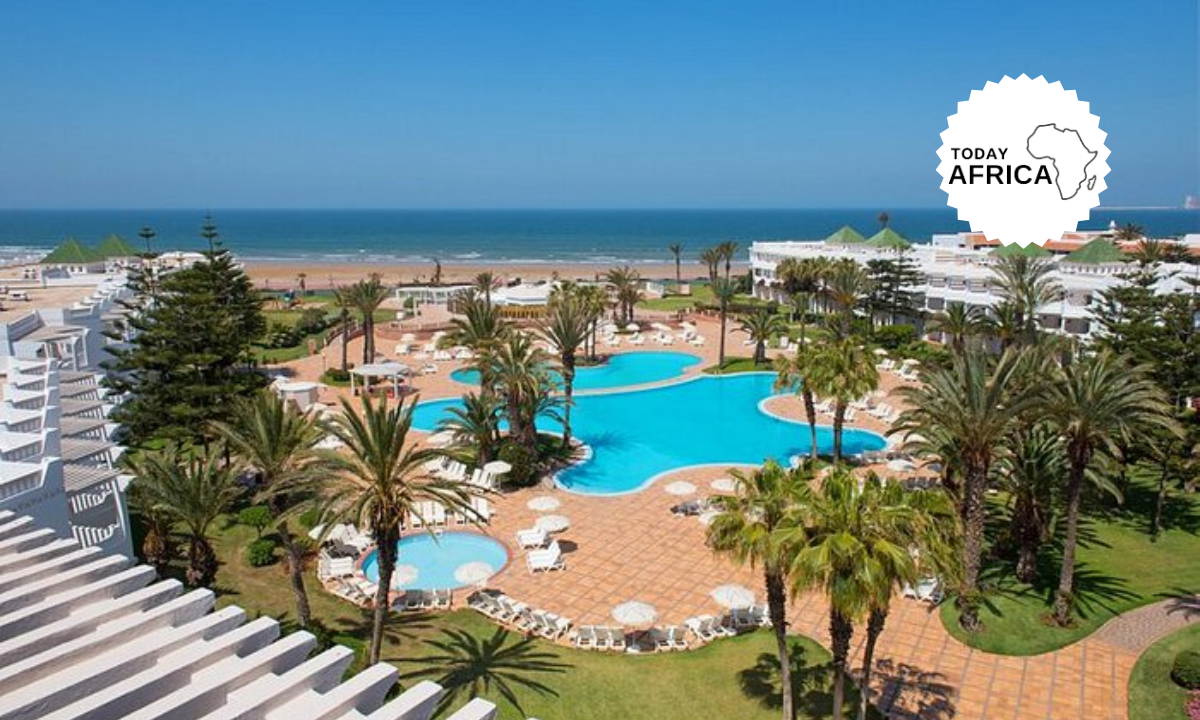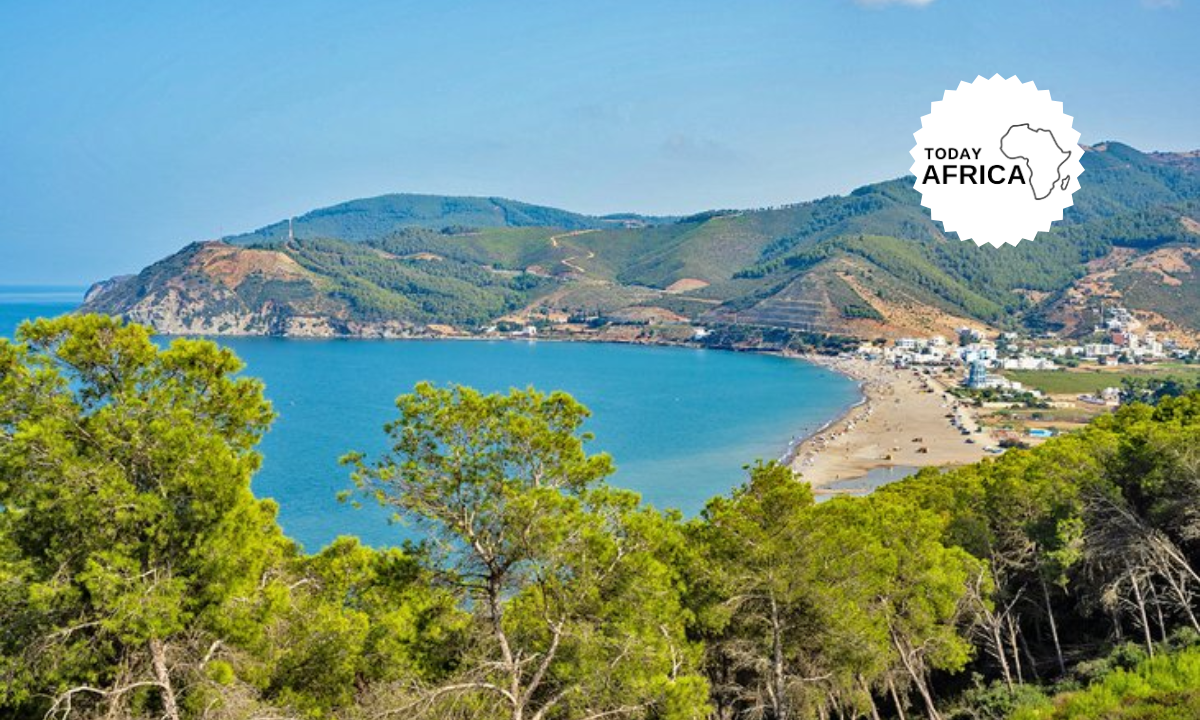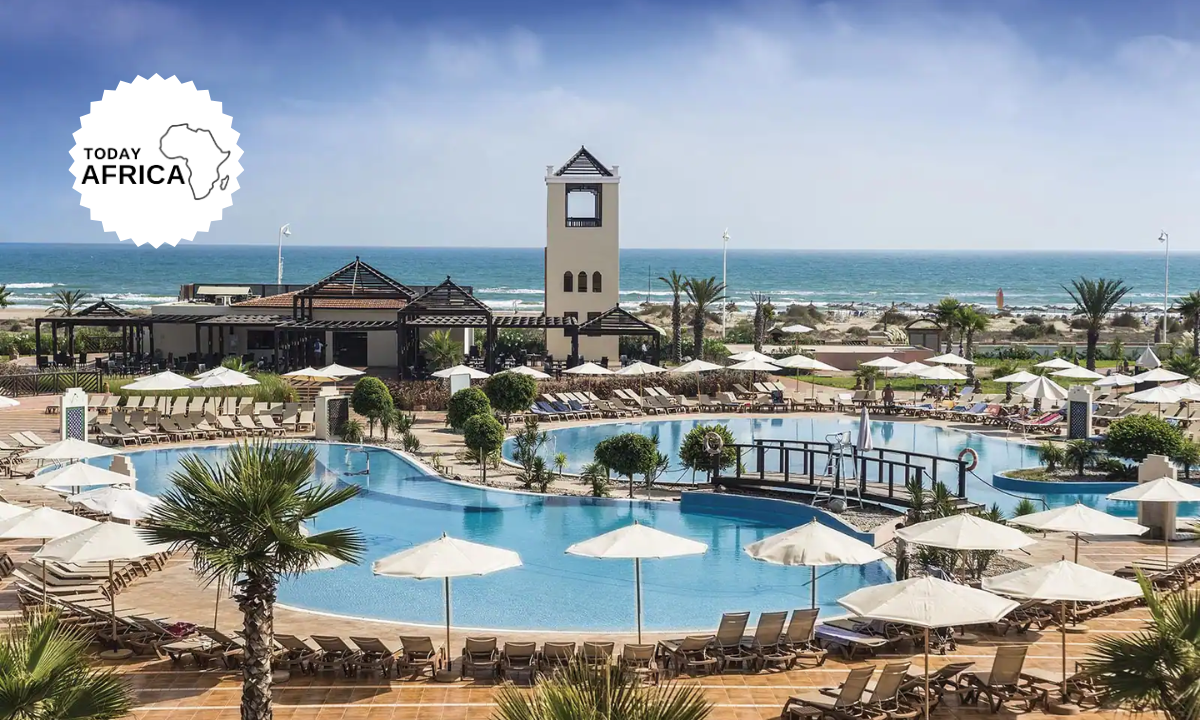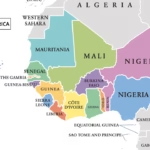Wondering things to do in Angola? There are countless places of interest in Angola. Aside from several popular tourist attractions, there are many places to visit. To get you started, below are some of the best places to visit and things to do in Angola.
Things to Know About Angola
Angola, located in southwest Africa, is bordered to the north and east by the Democratic Republic of Congo. To the south by Namibia and to the west by the Atlantic Ocean. With a history marked by Portuguese colonization and decades of internal conflict, Angola has emerged as a nation in the process of recovery and development.
Its geography ranges from coastal beaches to mountainous areas and plains, presenting a diversity of landscapes. Including the Namibe Desert, tropical rainforests and mighty rivers such as the Congo River. So, as you can imagine there are many fascinating places to visit on a trip to Angola.
Angola is known for its rich biodiversity, as it is home to a wide variety of wildlife species in its national parks such as Quiçama and Bicuar. Among its most important cities is Luanda, the capital and largest city, which combines elements of Portuguese colonial heritage with the modernity of a growing metropolis.
Best Time to Visit to Angola
The best time to travel to Angola is during the dry season, which spans from May to September, as rainfall is less frequent, temperatures are more moderate and it’s ideal for exploring different regions. However, weather conditions can vary, so it’s important to take regional climate differences into account when planning your trip.
Cuisines of Angola
Famous for the fusion of Portuguese cuisine with indigenous African flavors that result in delicious and aromatic dishes. Although in cities like Luanda there is more variety of imported foods. In rural areas people eat their harvests and meats are reserved for special occasions.
Some of the most common ingredients of their cuisine are fish, rice, corn, cassava, gombo and beans. Here’s a list of must-try dishes to try in Angola:
- Muamba de Galinha: is a chicken stew cooked with palm oil and a blend of herbs and spices.
- Palm oil feijão: beans cooked in palm oil, served with rice and fish.
- Calulu: is a stew that combines meat, fish or seafood with vegetables such as okra and eggplant.
- Mufete: grilled meat or fish accompanied by various sauces and side dishes, such as fried plantains and rice.
In some areas it is difficult to find a place to eat. For this reason, we recommend that you inform yourself well beforehand and take water and food with you. In the Cabo Ledo area, for example, there are not many restaurants. So, it is most common to eat in the hotels and resorts in the area.
There are few drinking water points in the country, and less in rural areas, so we recommend to always drink bottled water.
Things to Know Before Traveling to Angola?
- The Angolan Kwanza is the official currency of Angola. However, US dollars are generally accepted in the same manner.
- It is illegal to take currency out of the country. You must exchange before arriving at the airport if you don’t want to be penalized or even detained.
- The documentation required to travel to Angola: Passport (which must have at least six months validity when you enter the country). Visa (except for people who have Portuguese nationality, as they will be exempt from this requirement as it is a former colony). International vaccination certificate.
- The international vaccination certificate is very important when traveling to Angola and must include the yellow fever vaccine. However, it is also advisable to have received other vaccinations such as hepatitis, tetanus, typhoid, polio and meningitis C, although these are not compulsory.
- The official language of Angola is Portuguese. But more than 40 Bantu languages are spoken in the country.
- Hedge yourself against possible risks: travel insured. The Angolan health system leaves much to be desired, and in case of an accident you will need to go to a private clinic. With a good insurance you will travel with peace of mind and be fully covered for possible emergencies.
- Don’t drink tap water, only bottled water.
- Travel with plenty of cash because with the exception of a few hotels and restaurants, credit cards are not commonly used nor are there many reliable ATM machines.
- The best time to travel to Luanda is between June and September, during the dry season.
- Angola is quite safe but some precautions should be taken. It is recommended to avoid walking, going out at night or visiting troubled areas.
- Book hotels well in advance to avoid exorbitant prices.
18 Things to do in Angola
1. Experience stand up paddle boarding
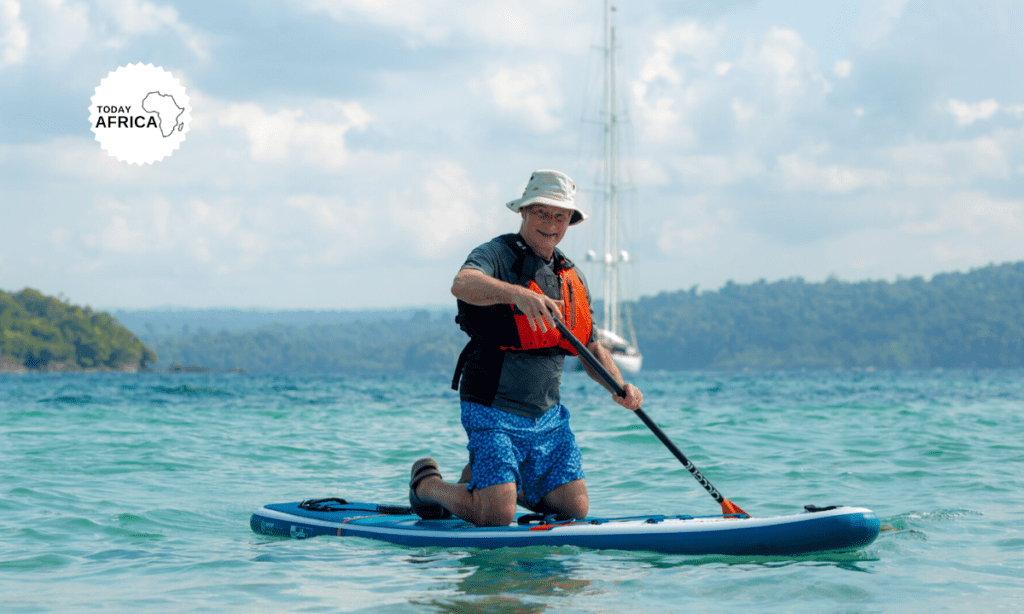
When was the last time did you explore something new? Get ready for one of the best things to do in Angola: Stand up paddleboarding. You do not need a good balance or a skill. It is a sport and a fantastic fitness activity for everyone, like couples, friends, young and old, from novices to experienced boarders.
It is a pleasant method to play on the water while also providing a full-body workout. The only thing required is good weather. Discover the joy and fun of stand-up paddle boarding on the beautiful island of Mussulo.
2. Shopping in Luanda Angola – Shop local handicrafts
Luanda, the capital of Angola, is a vibrant, multicultural metropolis. According to statistics, it is also the most expensive city in the world. As a result, one of the best things to do in Angola is to plan for a successful shopping experience. Shop for genuine local handicrafts and authentic goods as a souvenir.
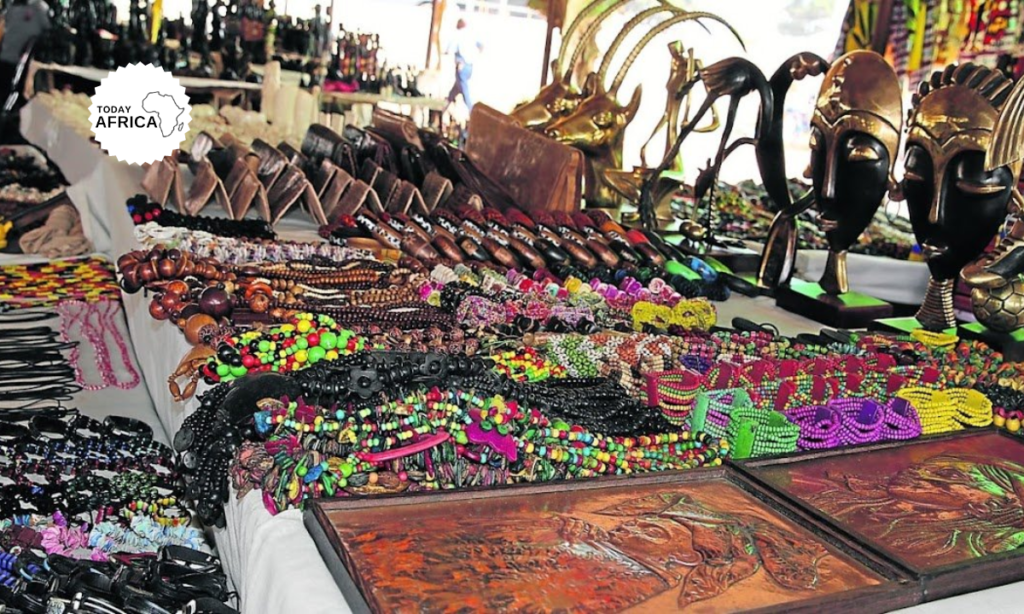
The following are some of the well-known retail districts for residents, ex-pats, and tourists:
Go to Belas shopping mall
Belas Mall is the most popular shopping and entertainment center in Talatona, Luanda. It is a place you can shop for souvenirs, and also have a good time. You can find many affordable shops and boutiques around, providing stunning beach costumes and accessories, casual clothing, and shoes from well-known brands.
Avennida shopping mall Luanda
The Avennida mall caters mainly to tourists and travelers. Fashion people will like the luxury designer boutiques and jewelry stores, while women will appreciate the large cosmetics and perfume stores. Also, the mall includes a variety of low-cost accessories and jewelry shops.
The Avennida retail complex is one of the most contemporary commercial malls in Luanda. Additionally, it is a popular place, providing a one-of-a-kind shopping experience in Angola.
Benfica craft market
The Benfica crafts market has been a genuine landmark for anyone interested in Angolese arts and crafts since the 1990s. At Benfica, the price of souvenirs and sculptures is friendly. There are various items available, including paintings, accessories, textiles, and other handcrafted gadgets.
Many artisans and vendors meet there every day. Around 700 merchants have approximately 10,000 pieces on display every day. It is where people buy monuments and traditional outfits like Mwana Pwo, which symbolizes the ideal feminine.
Futungo: The largest craft market in Angola
Futungo is a fantastic tourist attraction since it is the largest craft market in Angola. This market serves as a museum for many travelers. It only operates once a week, on Sundays. There, artisans from all across Angola display their best work. Original wood crafts, ritual characteristics, clay goods, hand-painted masks, and handcrafted jewelry, allowing everyone to find something he likes
3. Visit Kissama National Park Safari
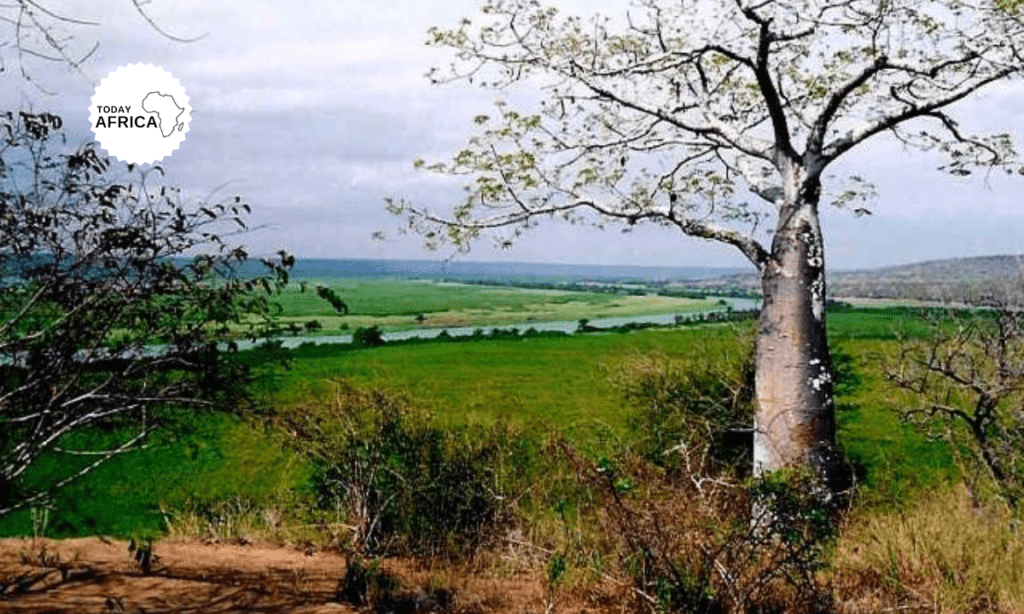
If you want to go on a safari in Angola, Kissama National Park is one of the finest places to go. It is around 75 kilometers south of Luanda, so close enough for a day excursion. But, do not expect it to be as good as safaris in Kenya or Tanzania.
It is, nevertheless, on equal or perhaps better in terms of natural surroundings and wildlife. Booking a trip with a local guide is the most convenient method to visit the park. While seeing the park alone is possible, it might be hard at times.
Because most people only speak Portuguese and the public transportation system in the country is complicated. For a comfortable experience at Kissama park, it is preferable to be accompanied by a local guide.
4. Visit mausoleum of Agostinho Neto
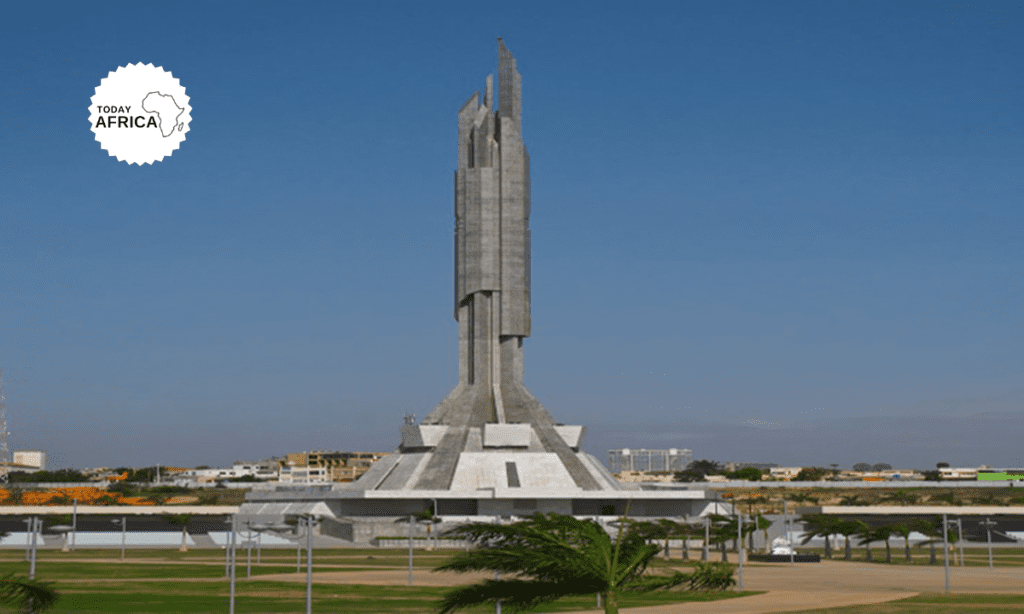
If you have some time to spend in Luanda, then pay your respects to the first President by visiting the mausoleum of Agostinho Neto. It is one of the most worthwhile things to do in Angola. This impressive and iconic monument is a dedication to the first president of Angola.
This symbolic structure is richly designed with historical features and breathes the heritage of Agostinho Neto. The location is lovely, well-kept, and contains a wealth of information on Luanda and Angola. It is a must-see for all first-time visitors to Luanda. However, photographs are not allowed inside the mausoleum.
5. Enjoy a glamorous dining restaurant
Some restaurants to enjoy cuisines of Angola are:
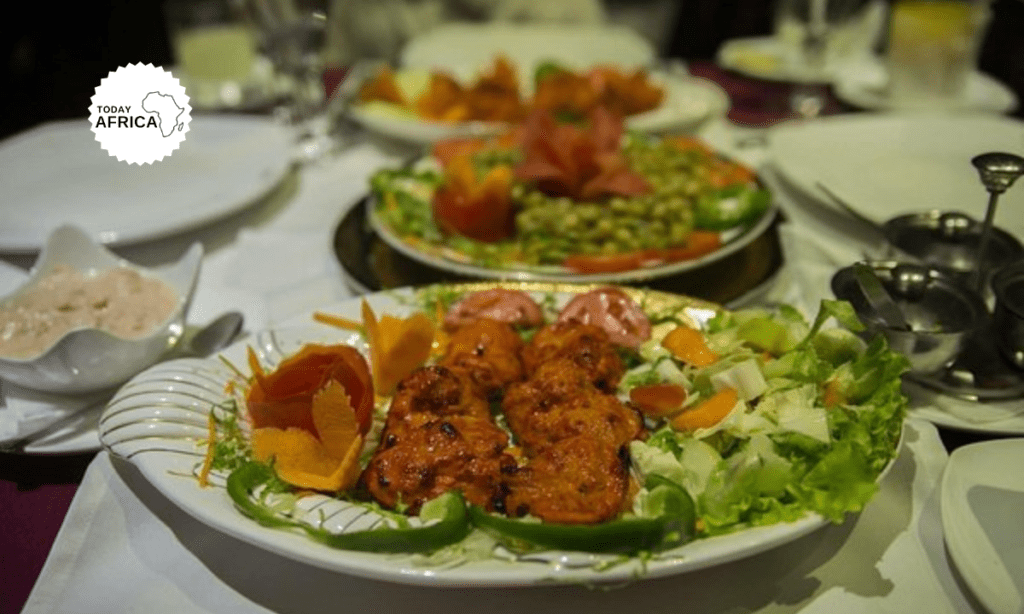
Restaurante Café Del Mar
The Café Del Mar restaurant is the perfect location to go if you want to spend quality time by the sea. It’s one of the finest eateries on the island of Luanda, with a relaxing atmosphere. Additionally, the personnel is quite pleasant, and the service is adequate.
Lookal Mar Restaurant Angola
Are you looking for a good seafood restaurant in Luanda? Then you should try Lookal Mar Restaurant. It has a broad selection of delicious fresh cuisine. In addition, the décor is beautiful with an African flair. On Sunday nights, the restaurant is open, which is unusual for many other eateries.
Chill Out Restaurant
Chill Out restaurant, well known for its club ambiance, features some of the best culinary options in Luanda, Angola. It is located along the picturesque coastline and offers a tranquil and natural atmosphere. The cuisine features Eurasian fusion dishes with Angolan flavor. Also, the quality of the food is excellent.
6. Visit the Saint Michael Fortress
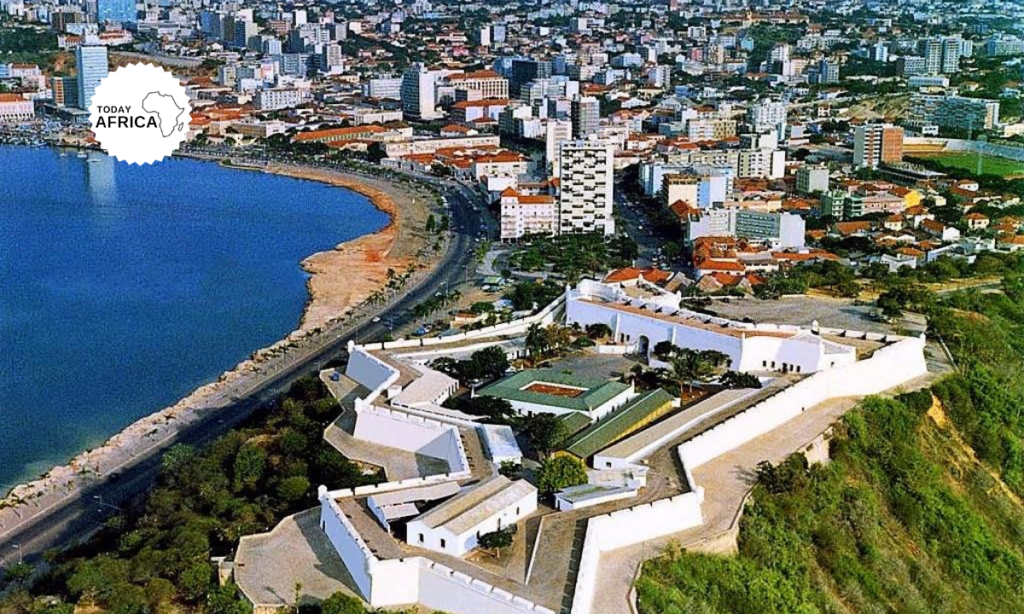
Säo Miguel fort was erected in 1576 by Paulo Dias de Novais, the founder of Luanda. And the fortress was designated as a UNESCO World Heritage Site in 1996.
The Saint Michael Fortress became an administrative colony in 1627 and served as a significant conduit for slave trafficking to Brazil.
It was a constructed structure with solid walls. It served as the headquarters of the Commander-in-Chief of the Portuguese Army in Angola until 1975. The National Museum of Military History is now in the fort.
7. See Kalandula waterfalls
Kalandula Falls is the most popular tourist destination in Malanje, if not all of Angola. These falls are frequently said to as Africa’s second most spectacular (after Victoria Falls). Located in the Lucala River, Kalandula has more than 100 meters high and 400 meters wide.
Read Also: 12 Things to do in Freetown Sierra Leone
During the rainy season, when the Lucala is at its peak, these falls are very spectacular. The scenery and proximity to the waterfall make the experience considerably more dramatic for those who hire a guide to go to the bottom. It is one of the most enjoyable activities in Angola.
8. Visit the currency museum Angola
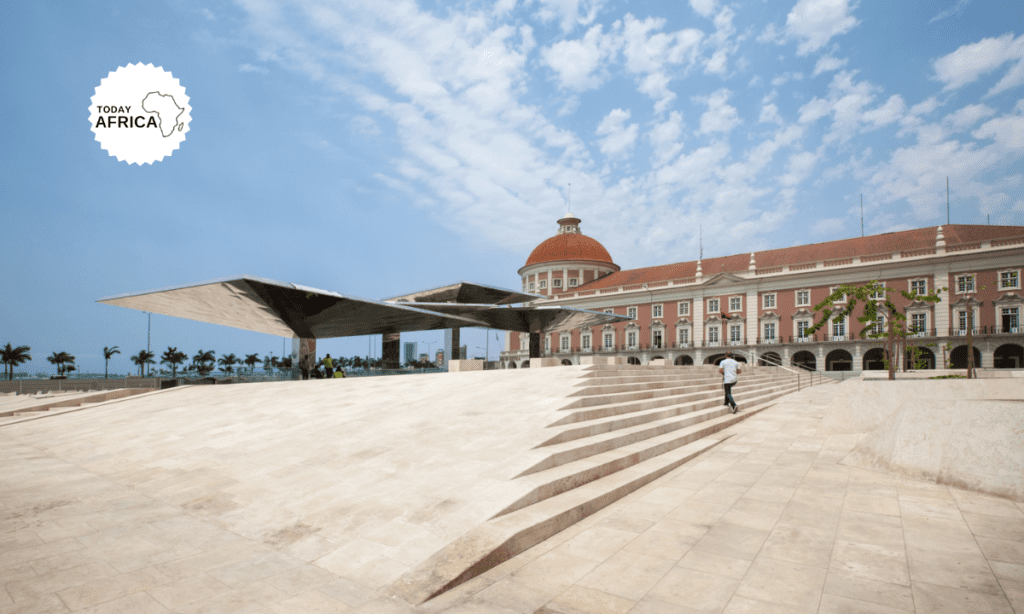
President Jose Eduardo Dos Santos inaugurated the Currency Museum in Angola. The museum is partly underground and located near the central bank on Fevereiro Avenue in Luanda Bay. The display in the exhibition hall remembers the history of Angola’s money, beginning with the usage of Nzimbu, a type of seashell, as a form of payment. So, visit the currency museum to discover more about Angola’s history.
9. Go to Pululukwa Resort Lubango
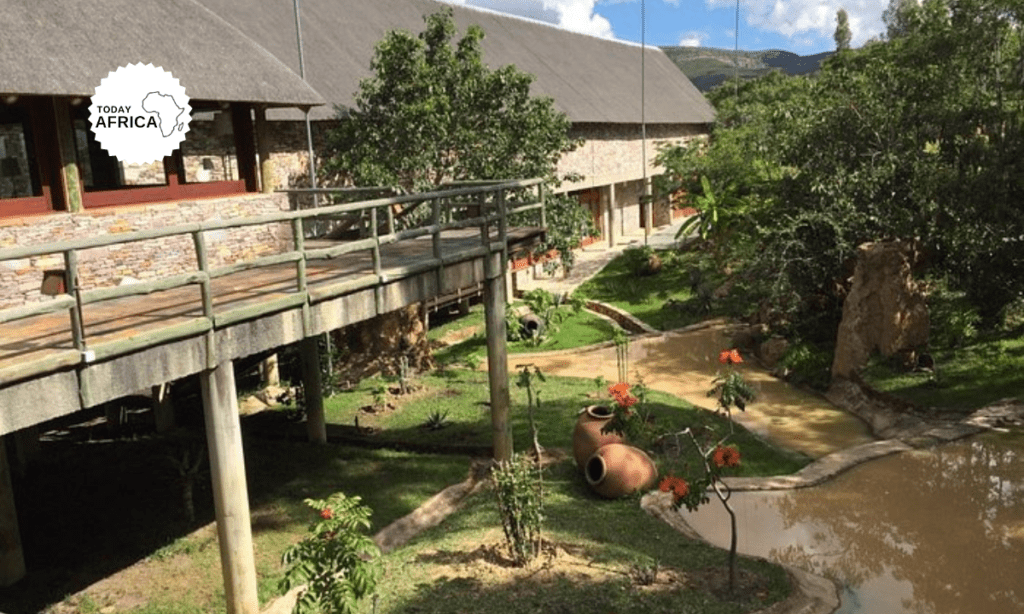
The Pululukwa Resort, one of Angola’s most luxury projects, was born within the city of Lubango, quietly hidden between forest and mountains. Moreover, this stunning resort has a restaurant with expansive outdoor areas and breathtaking views.
The Pululukwa resort is the perfect place to relax and enjoy nature. You can see wild creatures, zebras, antelopes, and even ostriches and crocodiles. As a result, you have a lot to discover with 100 acres and amazing hikes.
10. Relax at the beach of Cabo Ledo
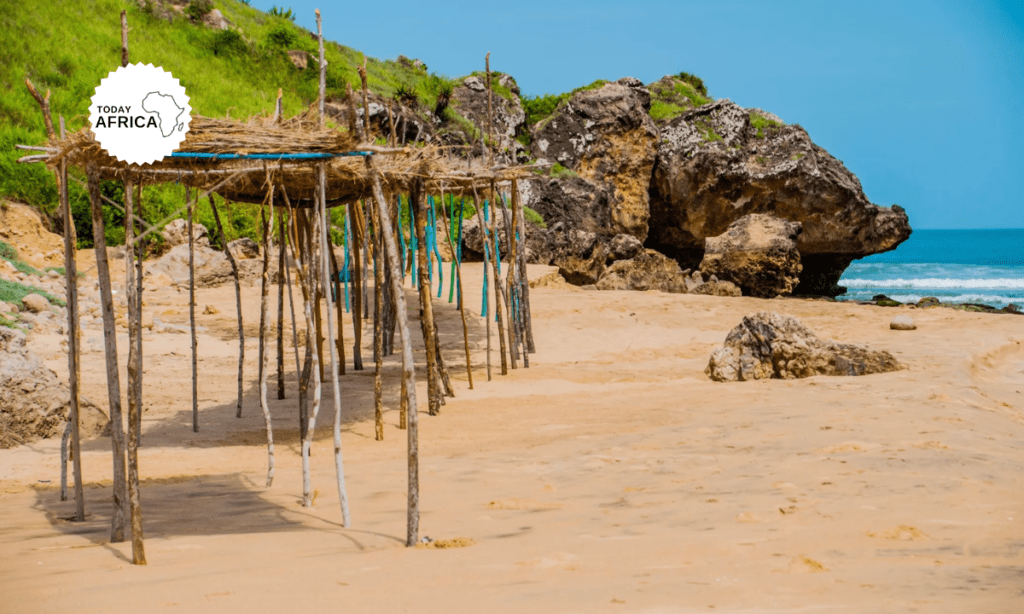
Cabo Ledo is Luanda City’s most well-known beach, where most people spend their weekends for a picnic or a relaxing retreat with their families. It is located a few kilometers outside of the city and is ideal for anyone seeking some quiet time. There are two types of beaches at Cabo Ledo. One is for tourist resorts, while the other is for boutiques and businesses If you enjoy the water and excellent food, this is the place to go.
11. The Moon viewpoint, an amazing landscape in Angola
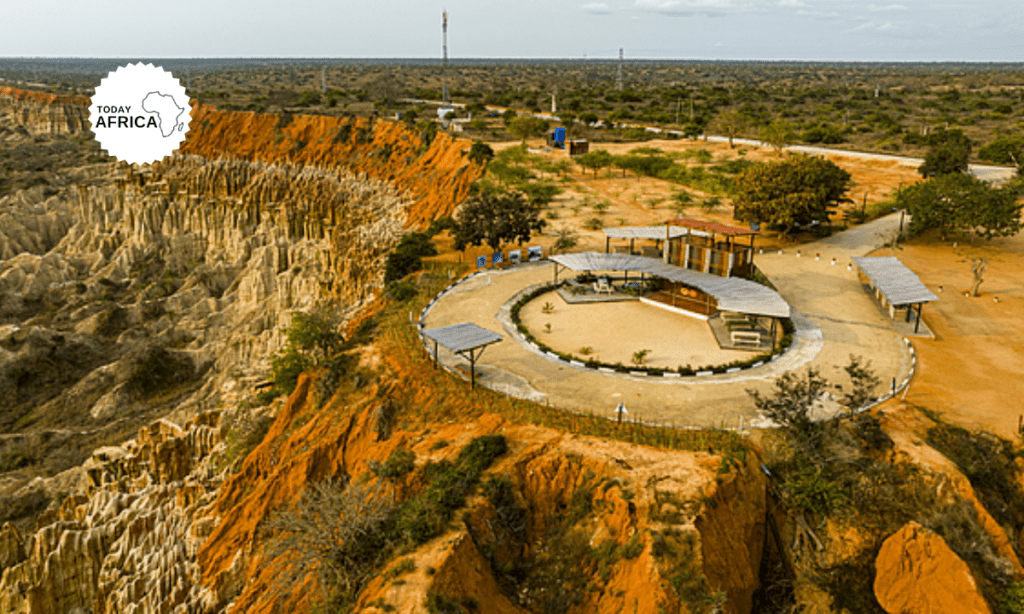
The Moon viewpoint, also known as “Miradouro da Lua” in Portuguese, is an iconic place in Angola that you can’t miss on your trip. Located about 40 kilometers south of Luanda, this impressive lookout offers wonderful views of a unique landscape. Erosion and wind action in this place over the years have created an unusual and fascinating landscape. The rock formations and cliffs resemble the terrain of the moon, or even Mars. With its reddish colors it creates a very striking environment.
12. Lobito, the third largest city in the country
Lobito, Angola’s third largest city, is located on the west coast of the country, about 30 kilometers south of Benguela. Noted for its seaport and laid-back atmosphere, Lobito is another of Angola’s top beach destinations. It attracts visitors with its golden sands and calm waters to practice water sports. In addition, the iconic Porto do Lobito Pier, built during the Portuguese colonial era, stands as a must-see historic building on your trip to Angola.
13. Cameia National Park
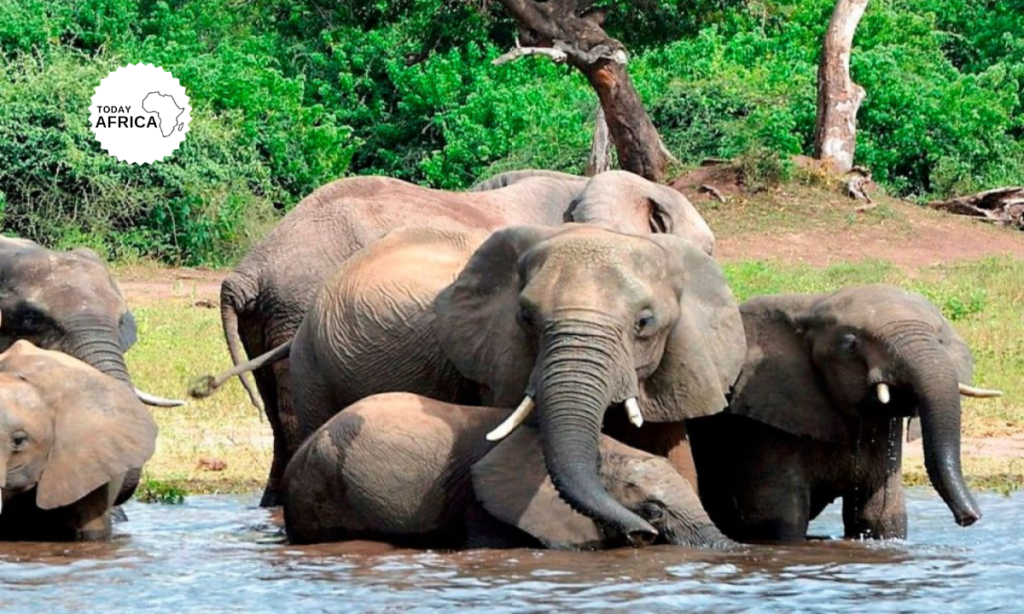
Once a game reserve, Cameia National Park faced many challenges even after its designation as a protected area, mainly because of the civil war that brought poaching. After the conflict, the park slowly recovered and can now be appreciated by curious tourists. At least four rivers pass through it, plus two lakes, one of which is the largest in the country. Its Miombo woodland and wetlands are home to wildebeests, antelopes, and water birds. It’s not yet fully recovered, but Cameia National Park aims to impress.
14. Cangandala National Park
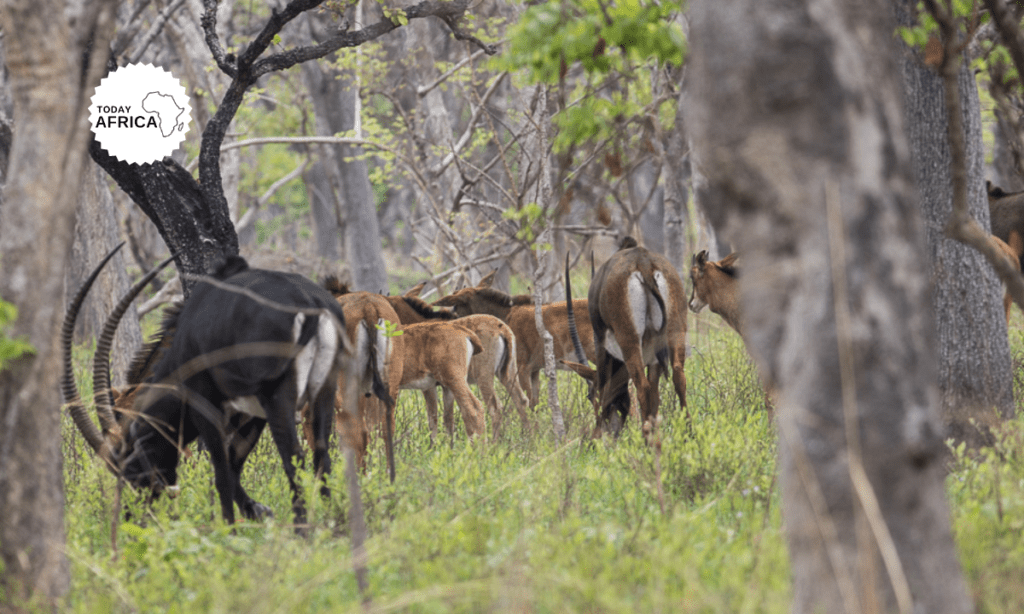
Cangandala National Park is Angola’s smallest, but it has a myriad of surprises. It’s most famous as the home of the rare giant sable antelopes, though it’s not known how many of them are left in the park. It has lush woodlands of various forest species, while the riverine has grasslands and swamps. Birdwatchers will enjoy roaming around the park as they might spot such winged wonders as hornbills, barbets, crombecs, babblers, shrikes, starlings, and tits, among others. Cangandala National Park is small but incredible.
15. M’banza-Kongo
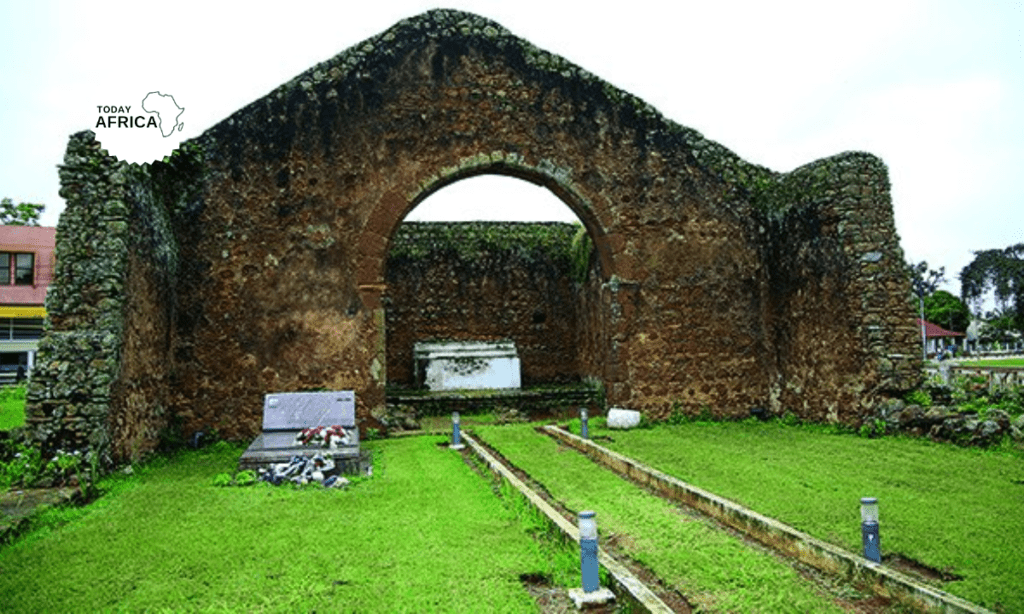
The town of Mbanza-Kongo is a UNESCO World Heritage Site because of the ruins of the once-thriving Kingdom of Kongo. The most famous site in the former royal capital is the 15th-century Cathedral of the Holy Saviour of Congo. In the Royal Museum, meanwhile, tourists can have a learning journey as they check out more artifacts related to the monarchy. The royal grounds are also home to the Yala Nkuwu, a sacred tree that’s believed by residents then and now to have the power to judge. Maybe tourists are interested in being judged by a majestic tree.
16. Iona National Park
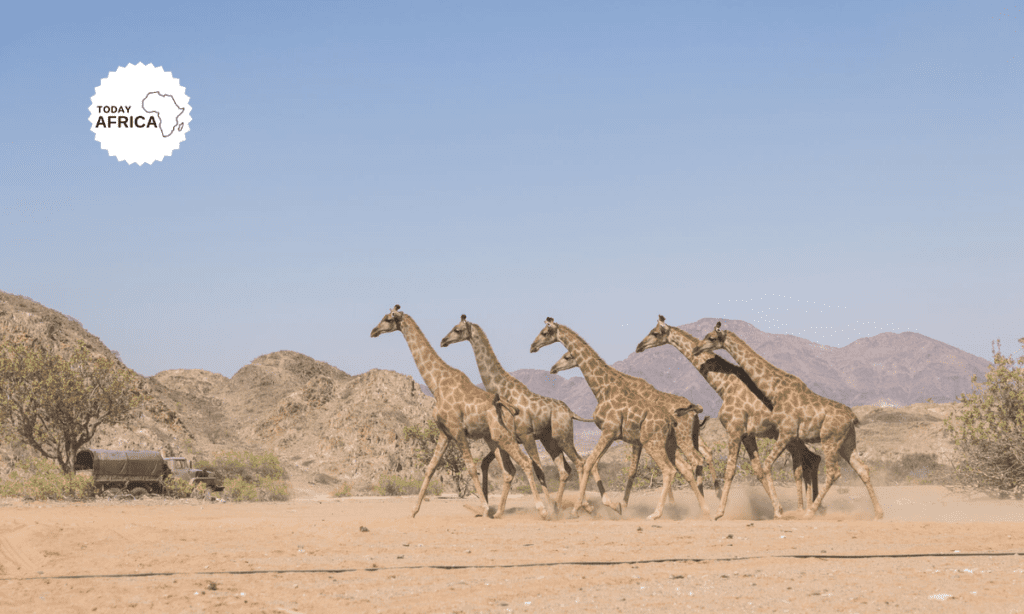
Bordered by the Atlantic Ocean, two rivers, and a plateau, the Iona National Park is an inviting place for outdoorsmen. It is the largest national park in Angola, where dunes, cliffs, plains, and mountains work together to create an impressive landscape. As with other reserves, the area was devastated by the war but is slowly recovering. Conservation efforts are ongoing to protect its resident zebras, ostriches, impalas, cheetahs, antelopes, and birds. Another must-see in the park is the Welwitschia mirabilis, an old plant species. The park is healing, and tourists can take part in it.
17. Sassa Caves
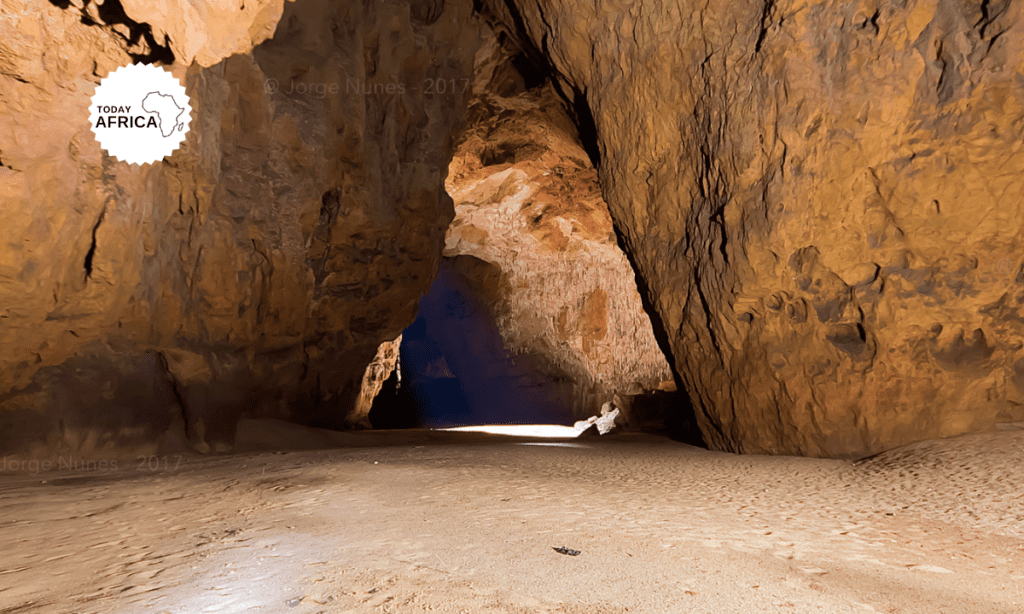
Spelunkers and first-time cavers will have a fun time exploring Sassa Caves. Located in the province of Kwanza Sul, this destination is proof that Mother Nature is a great artist. The triangular entryway into this world of the underground will tempt tourists to explore its untouched beauty. Considered to be one of the “Seven Wonders of Angola,” travelers should not miss this little-known destination that’s home to lush vegetation and geological wonders. Sassa Caves are humble attractions yet easily satisfy anyone.
18. Mupa National Park
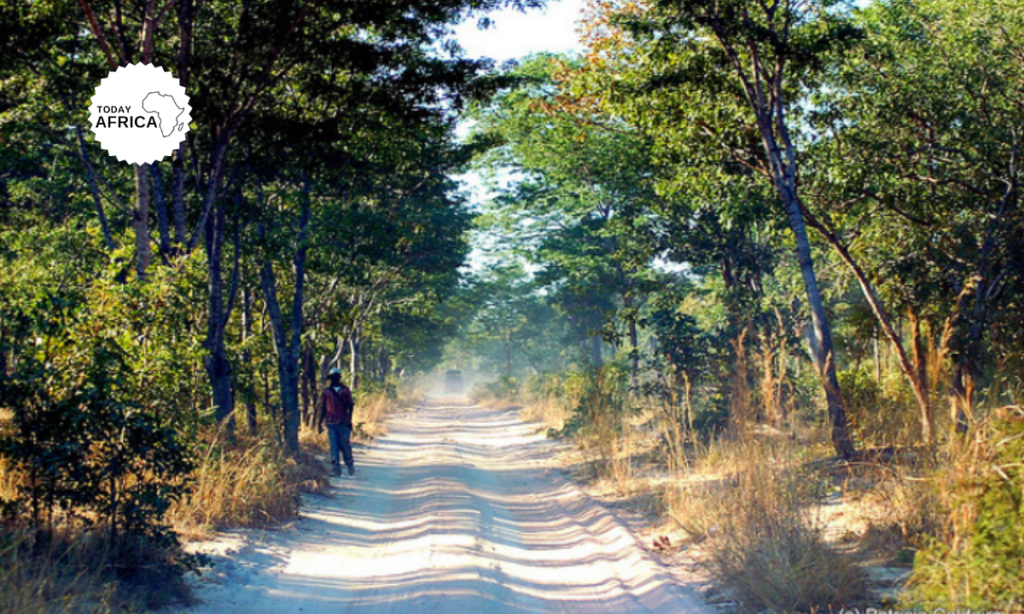
If you’re visiting Angola to birdwatch should head to Mupa National Park, an avifauna paradise, thanks to two rivers that pass through it. Some of the feathered friends that tourists will record in this charming reserve include tits, warblers, hornbills, cranes, starlings, and sparrows. The park was intended to protect giraffes, but its conservation failed. However, wildlife watchers can still spot hyenas, wild dogs, leopards, lions, and bats. Though threatened by the mineral industry and nomads, Mupa National Park continues to be a stunner on this side of the country.
Frequently Asked Questions
What is the climate of Angola?
Angola has a diverse climate due to its vast territory. In the north, a humid tropical climate with high temperatures and abundant rainfall from October to April predominates. The center also experiences a similar climate with rainy and dry season.
The south is more arid with low rainfall and moderate temperatures. Average temperatures vary between 20°C and 30°C in most regions, being cooler in inland areas and warmer in the coast and south. These climatic conditions are influenced by the cold Benguela current and wind patterns in the country.
What is the best time to travel to Angola?
The best time to travel to Angola is during the dry season, which spans from May to September, as rainfall is less frequent, temperatures are more moderate and it’s ideal for exploring different regions. However, weather conditions can vary, so it’s important to take regional climate differences into account when planning your trip.
How to get to Angola?
The most common way to get to Angola is via international flights to 4 de Fevereiro International Airport in Luanda, the capital. Airlines such as TAAG Angola Airlines, TAP Air Portugal, Ethiopian Airlines, Emirates and South African Airways offer connections from different parts of the world. Angola also has major seaports in coastal cities such as Luanda and Lobito that can occasionally receive cruise ships, offering an alternative for exploring the coast.
How to get around Angola?
If you travel around the country by private vehicle. It is very important to always follow the marked routes because of the risk of anti-personnel mines. The most comfortable option for covering long distances in airplane, although it is not as economical as other means of transportation.
Common ways to travel by land are by bus, with a network that works very well and connects many points of the country. And by train, although its service is more limited. On the other hand, there are other means of transportation such as the candongueiros (mini-bus) and cabs.
References:

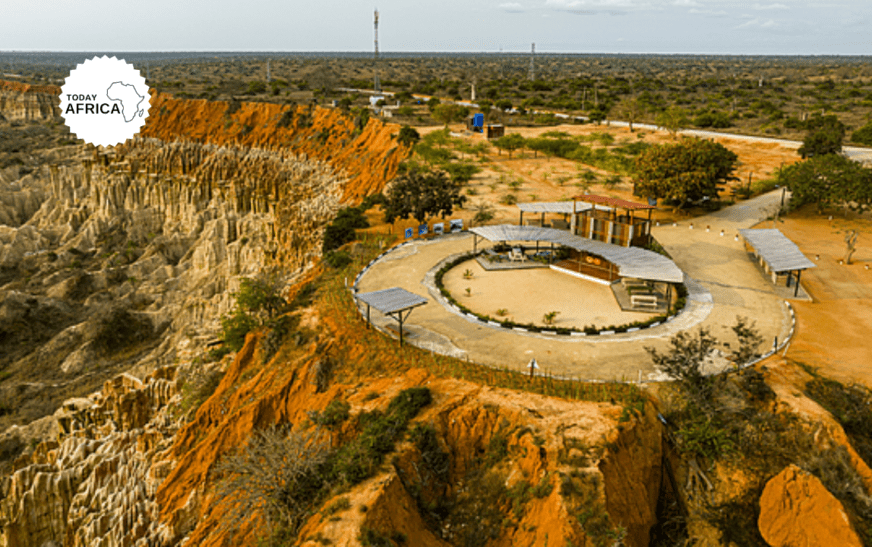

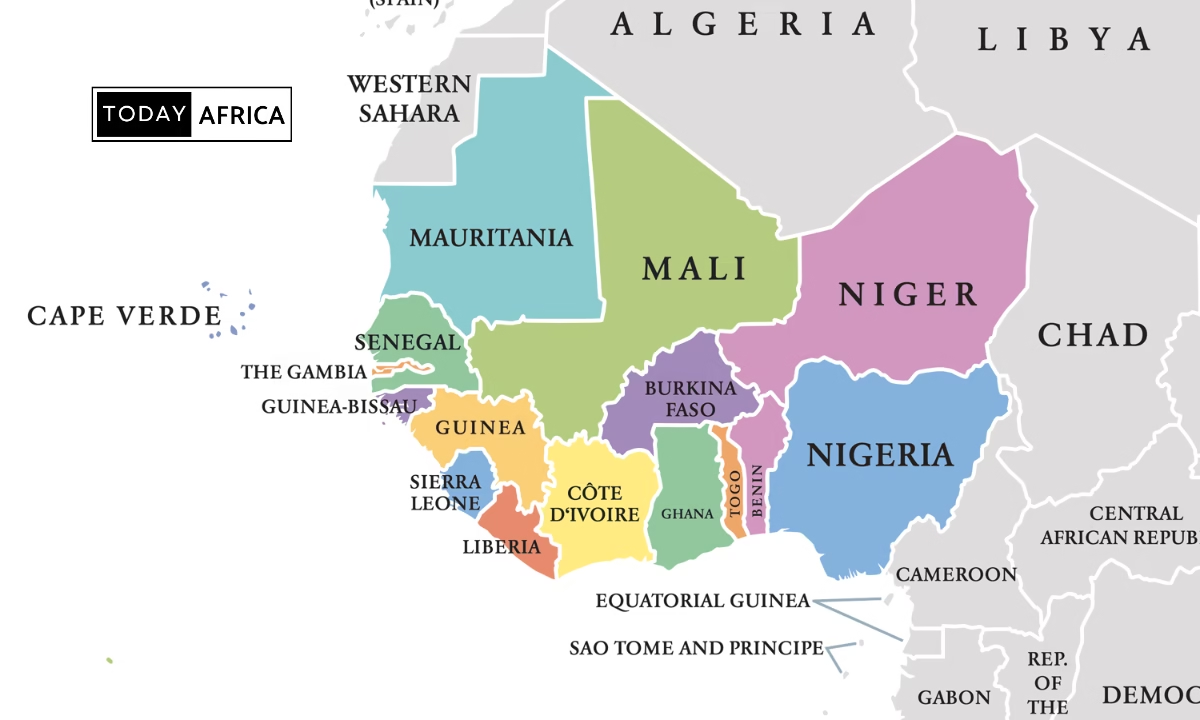



![15 Best Beaches in Morocco to See This Year [& Essential Packing List]](https://todayafrica.co/wp-content/uploads/2023/12/Blue-Simple-Dad-Appreciation-Facebook-Post-1200-×-720-px-6-9.png)
